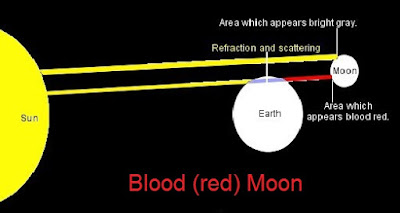EVIDENCE FOR 33 A.D. the Lamb-less Passover of Jesus one day before the Jewish PASSOVER
There’s a bunch of evidence to put the
day of Jesus’ crucifixion on April 3, 33 AD, or Nisan 14, 3794
in the Jewish calendar. For example, a Greek historian named Phlegon described
the same events we read about in the Gospels — i.e., that the sun was eclipsed
and there were earthquakes — and he dates it to 33 AD. Pontius Pilate wrote
something even more specific in a report to Tiberius Caesar:
Now when
he was crucified darkness came over all the world, the sun was altogether
hidden, and the sky appeared dark while it was yet day, so that the stars were
seen, though still they had their luster obscured, wherefore, I suppose your
excellency is not unaware that in all the world they lighted their lamps from
the sixth hour until evening. And the moon, which was like blood, did not shine
all night long, although it was at the full. – Pontius Pilate, 33 AD
I don’t know what caused the
sky to darken in the afternoon. A regular solar eclipse only lasts minutes, not
hours, and is caused by the moon, which was in the wrong place. However, a
blood moon is common during a lunar eclipse, which according to NASA occurred
on April 3, 33 AD and was visible in the Holy Lands.
The only problem with
accepting the 33 AD date is that the Synoptic Gospels all refer to the Last
Supper as the “Passover feast.” We know that the Last Supper was on a Tuesday,
but in 33 AD, Nisan 14 was on Friday, not Wednesday. When God set out the Jewish
feasts, He told Moses:
The Gospel
of John presents another conundrum, in that it clearly says the Last Supper was
on Nisan 13, the day before Passover, and that Jesus died on the cross even as
the priests in the Temple were killing the lambs people needed for their Passover
meals that evening. Nisan 14 is called Preparation Day, for obvious reasons.
In other
words, John’s Gospel agrees with Phlegon, Pilate and NASA that Jesus was
crucified on April 3, 33 AD. I love how that date works out in our calendar
with our Bible number symbolism. The THIRD day of the FOURTH month is God plus
Creation = Completeness. And two THREES for the year is like God the Father and
God the Son together.
That just
leaves us with the puzzling question of why the Synoptics ALL say the Last Supper
on Nisan 13 was a Passover feast. Pope Benedict XVI explained it in his Holy
Thursday homily in 2007.
It seems that the Dead Sea Scrolls say that the Essene
community celebrated a lamb-less Passover on the evening of the 13th. Neat,
huh? Jesus was the Lamb at this meal during which He instituted the Holy
Eucharist, giving us His Body and His Blood for all time.
The
Essenes were an ascetic Jewish sect that practiced voluntary poverty. We would
call them monks and, according to Josephus, a noted historian of the period,
there were thousands of them throughout Roman Judea. Apparently, they expected
the Messiah to arrive soon, so maybe it should not be surprising that they
disappeared simultaneously with the rise of Christianity. It is speculated that
most of them became Christians.
I think
this fact explains the apparent contradiction between the Synoptic Gospels,
which were written around 50 AD, and the Gospel of John, which was written a
few decades later. People would’ve still been familiar with the Essene
practices in 50 AD; some of them would’ve been former Essenes themselves. But
by 80 AD, those references to a Passover feast on Nisan 13 would’ve had hands
shooting up at every Bible study, especially among the Gentiles who would’ve
been really clueless about the practices of an extinct Jewish sect. I think
John knew there was a lot of confusion, so he wrote what he did in his Gospel
to make it very, very clear that Jesus died on Preparation Day, Nisan
14.
Pollination.wordpress.com appears to be a
Roman Catholic which may affect perceptions.
Sources:
This excerpt was shared as posted on https://polination.wordpress.com/2013/02/03/jewish-feast-days-in-33-ad/




Comments
Post a Comment
Thank you for commenting We appreciate your feedback.